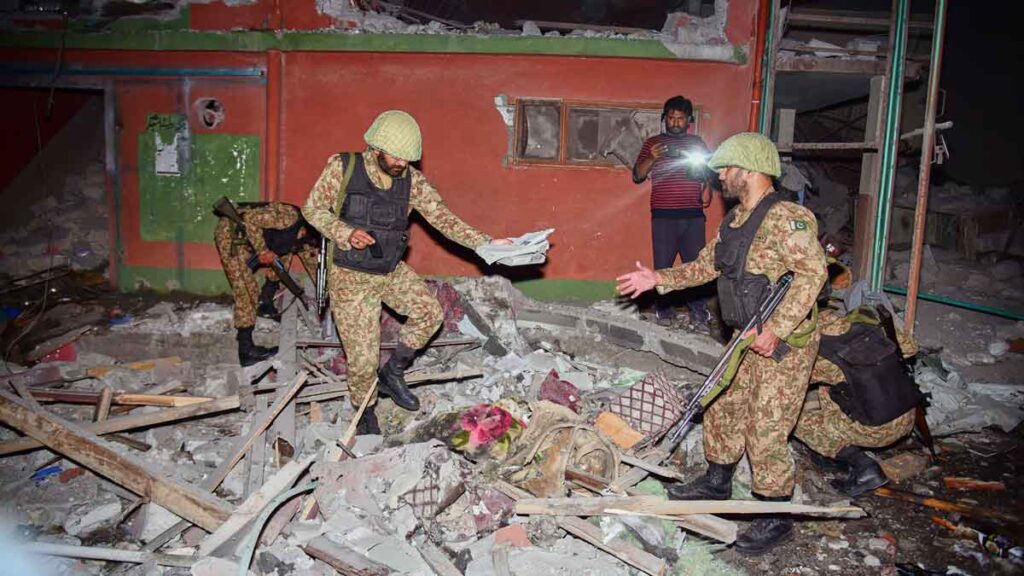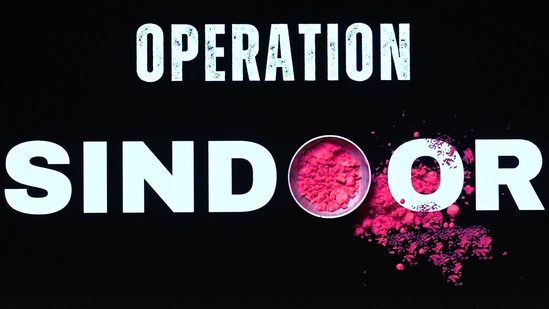“Chickens have come home to roost”, it is payback time for Pakistan, having indulged in terrorism as a statecraft and mastered the art of doublespeak, this time around they have bitten more than they can chew. The serene and gentle plains of Pahalgam were bloodied in the mindless communal massacre, thus provoking the Indians to retaliate in the similar form as on previous occasions in Uri and Pulwama. But the tragedy of such a script is that it is written by both the sides and India has outgrown the self imposed cautious restraint. Today with the tag of world’s fastest growing economy which stands as the fourth largest in terms of GDP, Indian Govt has the wherewithal to tackle Pakistan in all the domains, be it military, economic or diplomatic which has been demonstrated in the last three days.
India has set itself a very clear mandate that the terrorist infrastructure must be targeted relentlessly and since there are no terrorist camps here, Pak has decided to up the ante by targeting civilians and military targets.

This has provided India the opportunity to target certain military targets as well. The fact that India thwarted all Pak attempts of retaliation by drones and missiles effectively with its S400 AD system, aptly named Sudarshan Chakra, should serve as a lesson to Pak military not to unnecessarily indulge in adventurism and push their nation towards disintegration.
The chronology of events which commenced with the speech by Pak Chief of Army Staff Gen Asim Munir to overseas Pakistanis was a clear indication of his nefarious designs. It is also widely known that he is a highly unpopular leader both in the Pak Army as also with the civilians. In order to shore up his reputation and to divert the attention of the masses, he has followed the same old path which his predecessors have been following. The bogey of India and Hindus has been known to work in their country which was born out of hatred for Hindus only.
Pak army has always been dominated by the Punjabi Mussalman with the other ethnicities playing the second and third fiddle. At the time of partition, and for the first two odd decades their army still retained the ethos of the old British Indian Army and were free from religious dogmas. ZIa ul Haque, the Pak dictator who hanged Zulfiqar Ali Bhutto in 1978 after overthrowing his democratically elected Govt was the first one to seek the support of the mullah lobby. As luck would have, the Soviet invasion of Afghanistan also occurred at the same time and the Americans got the opportunity they were waiting for. Pak provided them the bases, training camps for the mujahideen, the Americans chipped in with cash and military hardware as also trained this ragtag force into fierce fighters. While all this was going on, Pak Army slowly and gradually started to get more and more Islamic in their approach and conduct. So much so that the militant mujahideen became a strategic asset of the army itself and were integrated into their tactical doctrines. It worked well initially as these terrorists were then diverted towards arch enemy India to execute their philosophy of ‘bleeding by thousand cuts’. Unfortunately they did not take into account the resilience and grit of our nation and the inherent strength of the institutions here.

OPERATION SINDOOR is thus not in isolation, it is an ongoing process where Pak frustration at the normalisation of conditions in Kashmir Valley, the economic stability and growth of this strife torn part had to be challenged. The message in Pahalgam was crystal clear, take the bait and walk into their well laid out ambush. Pak is supposed to have mastered the art of ‘cultivated irrationality’, and this was another example where with the nuclear overhang, any major conventional operation by India could invite a nuclear response by Pak. Perception management is a very crucial part of international diplomacy and statecraft, where Pak has been a past master and a tit for tat response can always be addressed by their own narratives. Modi Govt has called his nuclear bluff on last two occasions also and this time gone ahead and carried out precision strikes with ample proof for the world to see and take note.
Pakistan was bound to retaliate but their response was found wanting and effectively neutralised by Indian Armed Forces. The current situation is still developing, however international diplomacy has already swung into action. It appears that the Americans push to get India and Pak to cease hostilities has borne fruit, as both the nations had not declared themselves formally at war. This window needs to be exploited as lessons have been driven home. A war will be devastating for Pak but even Indian economy too will suffer in the bargain. Some sanity seems to have been driven into Pak, which is evident by the ceasefire declared. While analysts can continue to debate as to how this was brought about, could be IMF loan, could be a strict push by the Americans or may be even the losses suffered and its inability to carry on much longer, but it’s more than welcome. Let us hope for the best!


2 thoughts on “Operation Sindoor: Technical Knockout or Stalemate”
I think we did a great job operationally but on the perception part we lost out as the narrative in the west was more on the lines of what we lost rather than what we achieved. Great article by the way !
Nice article Suyash.
The Pakis had it coming, given their state policy of terrorism.
We planned well and executed better.
We also took some losses in the chin.